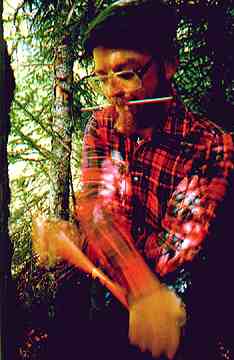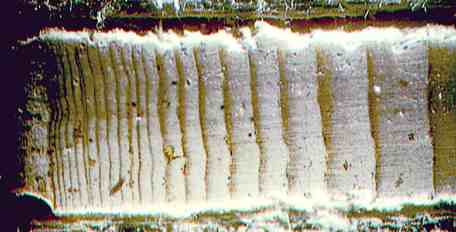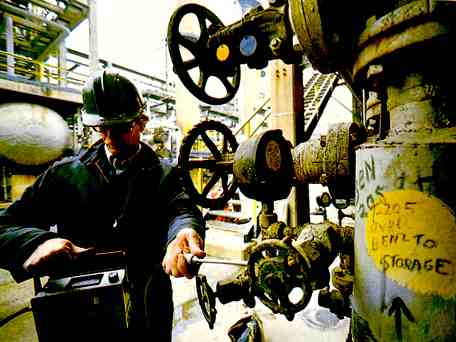previous page next
page

Tree rings tell the story: Something's killing red spruces in New York's
Adirondack Mountains. A core taken near Mount Marcy by Dr. Edward Cook
(above) of the Lamont- Doherty Geological Observatory shows normal growth
rates until the mid-1960s, when rings start to narrow (below).

Some scientists believe air pollution may have contributed to this decline.
Dr. Cook theorizes it may have resulted from abnormally hot summers and
cold winters. A similar weather pattern coincides with massive red spruce
losses during the 1870s. An infrared view of Mount Marcy in 1984 (below)
shows dying spruces as blue-gray instead of a healthy red.


Where there's smoke, there may also be toxic pollutants. At a warehouse
fire in Elizabeth, New Jersey, firefighters (above) put on breathing units
to protect themselves from dangerous gases. A special team had earlier
identified hazardous chemicals in the fire. Detonations hurled explosive
aerosol paint cans at the firefighters like hand grenades.

Airborne toxics can also escape in much quieter ways. At a petroleum
refinery in Marcus Hook, Pennsylvania, environmental engineer George Keegan
(above) tests valves for leaks of benzene, as required by federal law.
Thousands of other chemical compounds in the United States - many suspected
of causing cancer -- remain unregulated.
next page





